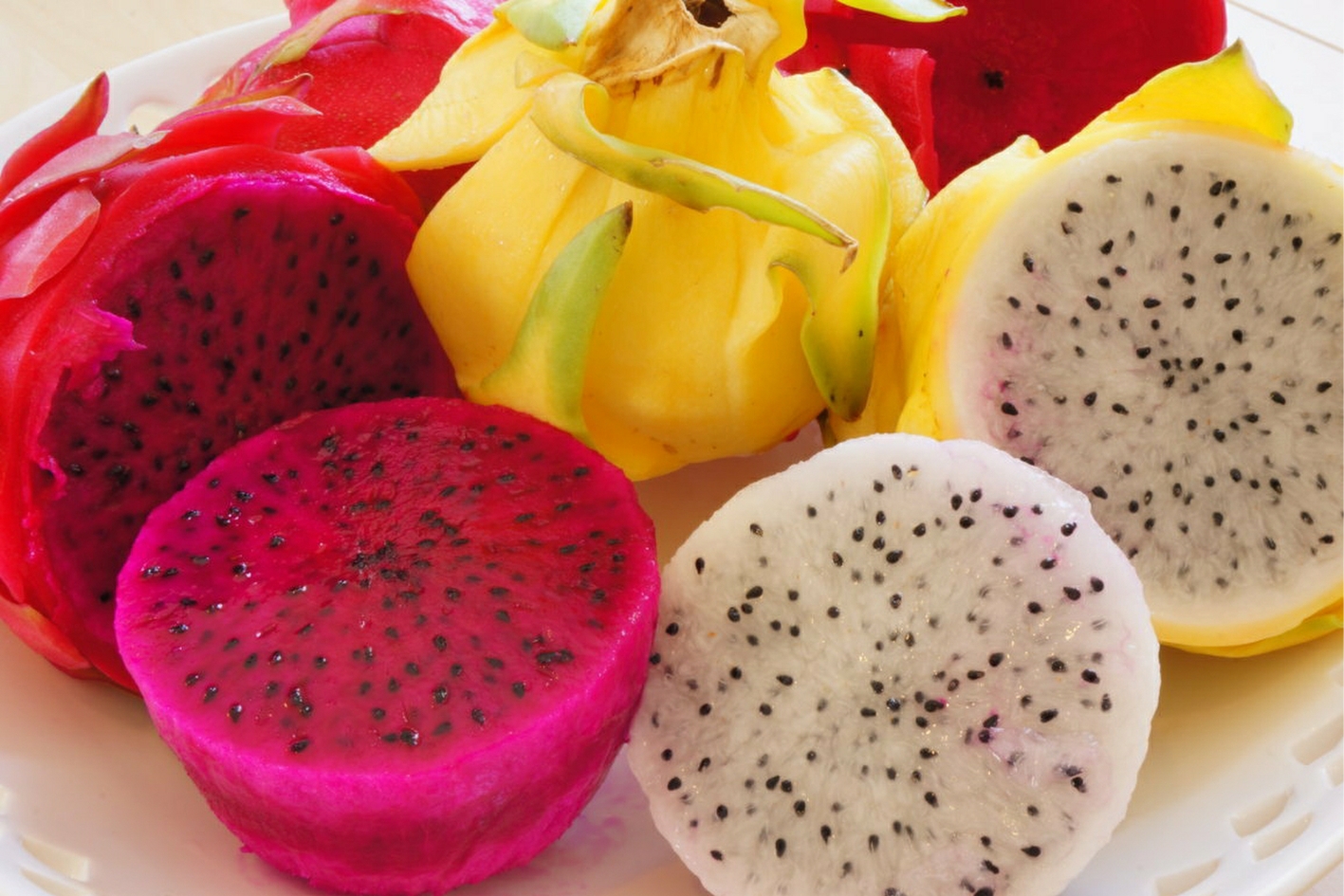
A feast for the eyes
" One of the most striking features of the pitaya is its appearance "
The pitaya, commonly known as dragon fruit, is a tropical fruit celebrated for its vibrant appearance, unique taste, and nutritional benefits. Its origins are in the Americas, particularly Central America. It’s the fruit of several cactus species, most notably Hylocereus. Over the years, its cultivation has spread to other tropical and subtropical regions, such as Southeast Asia, where countries like Vietnam and Thailand have embraced it as a major agricultural product. Pitaya also is cultivated in Australia and along the Pacific coast of South America.
How did pitaya get its name of dragon fruit? You won’t be surprised that the leather-like skin and scaly spikes had something to do with it. Its name Pitaya possibly relates to the names in Mexico, Central America and northern South America describing tall cacti species.
One of the most striking features of the pitaya is its appearance - a feast for the eyes indeed. The fruit has a bright, spiky exterior that can be red, pink, or yellow, depending on the variety. Inside, the flesh is either white or a deep magenta, dotted with tiny black seeds. This eye-catching look makes it a popular choice for food stylists and social media enthusiasts.
The flavour of pitaya is often described as mildly sweet and refreshing, with a texture reminiscent of kiwi or pear. Its subtlety makes it versatile for culinary use, from being eaten fresh to blending into smoothies, desserts, and even savoury dishes. Some varieties are sweeter than others, with the red-fleshed types generally being more flavourful than their white-fleshed counterparts. Result? A delicious yet subtle refreshing taste.
Pitaya is more than just a pretty fruit; it is packed with health benefits. A nutritional powerhouse low in calories yet rich in essential nutrients, including vitamin C, calcium, magnesium, and iron. The fruit’s high fibre content supports digestive health, while its antioxidants, such as betalains, help combat free radicals in the body. Additionally, it contains prebiotics that can improve gut health by promoting the growth of beneficial bacteria.
What are the cultivation and sustainability benefits? As a cactus fruit, pitaya is well-suited to arid and semi-arid climates. Minimal water is needed compared to many other crops, making it an environmentally friendly option. The plant’s ability to thrive in less-than-ideal soil conditions has also made it an appealing crop for farmers looking to diversify their produce.
When selecting a pitaya, look for a fruit that is firm but yields slightly to pressure. Avoid those with blemishes or overly soft spots. Once purchased, it can be stored at room temperature until ripe, after which refrigeration is recommended to prolong freshness.
With its stunning looks, delightful taste, and myriad health benefits, pitaya is a fruit that truly stands out. Whether enjoyed on its own or as part of a dish, it offers a refreshing and nutritious addition to any diet.
This might surprise you: pitaya flowers bloom overnight and will have wilted by the evening; nocturnal pollinators such as bats or moths are the fertilizers; will survive temperatures up to 40C but doesn’t survive in freezing temperatures; a healthy piece of stem can take root; in some countries Pitaya has become an invasive weed.
Prepared by a Chaîne News Online Staff Writer
Researched from various sources. E&OE
Wishing you a Happy 'Chocolate' New Year!